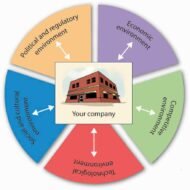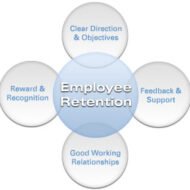Posted by Managementguru in Business Management, Economics, Principles of Management, Strategy, Technology
on Mar 26th, 2014 | 0 comments

Technological Impact on Business Environment and Society The tremendous technological growth that is being witnessed is made possible through extensive programmes of technological research being conducted by many types of researchers working within universities, business, and non-profit research organizations. Technological developments are strong and all pervasive forces of the business environment. Technology is the scientific knowledge to practical problems. Technology feeds on itself and it affects business in two major ways: Through its impact on society in generalThrough its direct influence on business operations and activities. Technology and Economic Growth: Technology affects society. In fact, we feel its effect in our everyday lives. It affects economic growth, our standard of living and our culture. However, some of the effects of technology are highly beneficial and some detrimental. These effects on members of the society may in turn affect business practices. We are surrounded by so much of technology, that we take it for granted and usually do not realize how much it affects us until we have to do without electricity, water, transport or telephone. Technological developments have raised the standard of living. In spite of inflationary pressure and considerably a high degree of unemployment, generally families eat better, wear a wider variety of clothing, and live in more comfortable homes. Technology and Lifestyle: Technology also influences basic aspects of our culture, including religion, education, mobility, health care, art, language, laws and their enforcement. For example, technological advances in health care allow physicians to treat their patients in a virtual environment through video conferencing, which again is helpful in legal environment too for the judges to proceed with investigations on hard core criminals, who need not be produced before the court for security reasons. Creative Destruction: Every new technology is a force involved in creative destruction. Say, television hurts movies, synthetic fibers are considered rival for cotton fiber. The discovery of new technology even sometimes affects economic growth-TV with its high entertainment value takes away productive hours of mankind. Each new technology creates major long term consequences, which are not always foreseeable. How do you justify nations spending more money to develop missiles, nuclear weapons and bombs for the sake of security? Developing nations have to buy technology from foreign countries, as they are not resourceful in terms of capital needed for Research and Development, expertise, patents, licenses, and equipments and so on. This transfer of technology involves huge costs as a result of which a vicious circle is formed, in which weak technology creates dependence and dependence creates weakness. Conserve, Reduce, Recycle: The recent trend can be enumerated through this slogan, “Conserve, reduce and recycle”. The stress today is on clean production measures, advanced robotics, zero-emition vehicles, material recycling and alternative fuels and materials. This change towards love for environment by the technologists is a sure sign of positive...

Posted by Managementguru in Business Management, Human Resource, Organisational behaviour, Principles of Management, Training & Development
on Mar 19th, 2014 | 0 comments

New Paradigms in Employee Retention What is Employee Retention: It refers to the various policies and practices which let the employees stick to an organization for a longer period of time . It refers to the ability of an organization to retain its employees. HRM Practices: A company to ground itself successfully in the chosen field of activity should adhere to sound human resource management practices, as it is firmly believed that human resource is an asset and investment in human capital paves way for comprehensive development. Many firms fail, in spite of being resourceful in terms of capital, infrastructure and technology. The reason shall be attributed to ineffective handling of human skills or misappropriation of human potential. Human resource management involves not only in recruiting and selecting the right people but also empowering them by suitable training to enhance their technical skills and expertise to perform tasks. The Purpose of Training: Training ultimately aims at converting theorists to performers and orients itself towards accomplishing the enterprise objectives. Big corporate companies concentrate on talent acquisition from the pool of fresh graduates and experienced hands in the IT industry as well. They create a lively corporate atmosphere with “an intelligence network” contributing to the success of the organization. Recruitment and Selection: If you have a feeling that, recruitment and selection are mere procedures to be followed for the sake of selection of human resource, kindly change that notion. These are the crucial steps which determine the fate of your organization. People from different disciplines form a team to achieve the goals and objectives of your organization. Leading a group with such diversity is a feat in itself. Selecting knowledge workers whom you believe will achieve your corporate mission and devising the human resource practices in accordance with their work-life balance will yield great results. Training Programmes: Training programs are developed for different spheres of activity by experienced trainers under the guidance of the top management. Proper training to the trainees ensures maximum work done in minimum time. Training not only makes individuals more informative and knowledgeable but also action buffs. Learning is a key process in training that brings about the desired change in behavior. Corporate companies are also concerned about the career prospects of employees working for them, as they are very well aware of the fact that providing lateral and vertical growth prospects for their workers is the only possible way to retain them. Another way for employee retention is to offer compensation on par or higher than industry standards and periodic review of their pay or compensation in accordance with the performance standards. This method of evaluation is suitable only for companies where workers are highly self motivated and have the capability to understand what it takes to reach the next level in their career ladder. Flexi-Timings: Flexibility is introduced in work life by some of the big corporates who try to visualize the practical problems faced by their employees, particularly women, who come to work. They offer “flexi-timings” in work and support by running “crèche” to nurture new borns. It has been proved that a small siesta after lunch improves the brain activity. The HR policies formulated by the management must encompass all the elements needed for a holistic vision, mission and business growth. This can be made possible by maximizing the efficiency of human capital that adds value to the organization. Note: Companies will also continue to remain generous with pay packages but the big change will be that they will invest a lot more in training and development. “Acquiring talent is much more expensive than grooming...

Posted by Managementguru in Financial Management
on Feb 25th, 2014 | 0 comments

Venture Capital and Traditional Financing- Comparison of Advantage Venture capital is a new form of financing that has come as a boon for young entrepreneurs and it plays a strategic role in financing small scale enterprises and high technology and risky ventures. In all the developed and developing nations it has made its mark by providing equity capital, so, they are more like equity partners rather than financiers and they are benefited through capital gains. Don Valentine is known as "the grandfather of Silicon Valley Venture Capital". He was one of the original investors in Apple, Atari, LSI Logic, Cisco Systems, Oracle, and Electronic Arts back in the 1970s. So he has a top notch track record. Here are some of his quotes:— Lion (@Lion_Investor1) July 27, 2021 Venture capitalists evaluate the risk using the following factors: Management TeamCompetitive AdvantageMarket PotentialBarriers to entryExit Strategy Banks’ Stand Towards First Generation Entrepreneurs Young and growing businesses need capital at the right time, not only to float their company in the market but also to survive in the long run. When financial institutions like banks and other private financial organizations hesitate to take the risk of early stage financing, since the credibility of the budding firm is not established, venture capital firms comes into the foray to fund the project in the form of equity which can be termed as “high risk capital”. Venture Capitalist is like an Equity Partner Although there is a misconception that the interest of venture capital firms is mainly driven by cutting edge technology in the industry, it is not always the case with all venture capital firms. A venture capitalist associates high risk with huge profits; of course after thoroughly analyzing the prospects and consequences and the viability of the project. The venture capitalist becomes a partner with the entrepreneur in his business. True venture capital financing need not confine itself to high end technology products. Any risky idea with great potential can be financed and venture capital is an all powerful mechanism to promote and institutionalize entrepreneurship. Focus on Growth Mainly venture capital focuses on growth. A venture capitalist is very much interested to see a small business growing into a larger one. He assists in setting up the business, funding it and travels all along to see the firm grow. If it is potential equity participation, the venture capitalist can come out of the partnership once the company becomes profitable and take back his money by selling the shares or convertible securities. If the firm opts for a long term investment from the venture capital finance, the financier has to develop an investment attitude for a long term, say five or ten years to allow the company to make large profits. Active Participant in the Operations of the Firm Another form of financing is that the venture capitalist has his hands on management by which he becomes an active participant in the operations of the firm and his thinking is streamlined as to how to multiply and make quick money which is a win-win situation for both sides. Not only finance, the venture capitalist also contributes to marketing, technology upgradation and management skills to the benefit of the new firm. Venture Capitalist- Banker, stock market investor and an entrepreneur in one. The venture capitalist’s management approach is significantly different from that of a banker whose prime concern is collaterals and securities in the form of assets. He keeps his hands off the management and plays safe. The venture capitalist can also not behave like a stock market investor who invests money without having thorough knowledge about the company’s business and management. He combines the qualities...

Posted by Managementguru in Business Management, Operations Management
on Feb 24th, 2014 | 0 comments

Design of an Ideal Plant Layout Approach to proper layout: When a new plant is erected, a good deal of expertise is used by management for executing the design of an ideal plant layout. A comprehensive approach with regard to the placement of machineries, location of stores, inspection cabins, tool rooms, maintenance wings, receiving and shipping departments, toilets, canteens and other handling equipments, is necessary for achieving quick and smooth production at the least cost. There is no set pattern of layout for all plants. What is suitable for a giant plant will not be fit for a small factory. What goes well with a processing industry may not match a job industry. But, the basic principles governing a plant layout are more or less the same. Cost of Production: The all time concern of big industries is the ever rising cost of production. Their priority would be mass production or continuous production to factorise the economy of scale. This is possible where industries are involved in producing highly standardized products. Industries involved in the production of customized or specialized products, catering to premium customers, cannot go for mass production since it is not a feasible option. They have to dedicate separate lines of production for different products. Invariable of the type of production, all industries need to cut down their costs wherever possible. The only possible solution is to design a suitable layout that facilitates uniform and minimum movement of materials thus avoiding wastage, minimization of production delays and avoidance of bottlenecks. An ideally laid plant layout reduces manufacturing costs through reduced materials handling, reduced personnel and equipment requirements and reduced in-process inventory. It is amazing how industries in Japan have mastered the art of employing Just-in-time concept, which focuses on continuous improvement and increases the rate of return on investment by reducing the in-process inventory and associated costs. The importance of plant layout would be better appreciated if one understands the influence of an efficient layout on the manufacturing function. An efficient plant layout would definitely incorporate the following aspects: Economies in handling-cut down material handling costs that account for 30-40 percent of the manufacturing cost Effective use of available space-especially in urban areas, where every inch of available space is an asset. Minimization of production delays-on time delivery schedules and speedy execution will help. Improved quality control-to reach expected standards of production Minimum equipment investment-by planned machine balance and location Identification and rectification of bottlenecks-don’t allow materials to pile up at any place of production, don’t allow workers to be lethargic, keep the machines in the best of condition to speed up operations. Better production control-facilitated by a planned layout Better supervision-a good plant layout enables the supervisor to have a hawks eye on the entire shop floor Improved utilization of labor-process flow should be planned in such a way that workers should be equipped all the time without any lull Improved employee morale-by providing better working conditions, employee facilities, increased earnings, reduced accidents etc. , Scope for Expansion: A good plant layout must also have scope for expansion or revision in future. Even best layouts become obsolete over a period of time, so revisions ranging from minor alterations to a complete dismantling of the existing structure and installation of a new layout become necessary from time to time. Manufacturers, who are keen to survive the global competition, must consider revising their layouts which should fall in line with technological and market...








